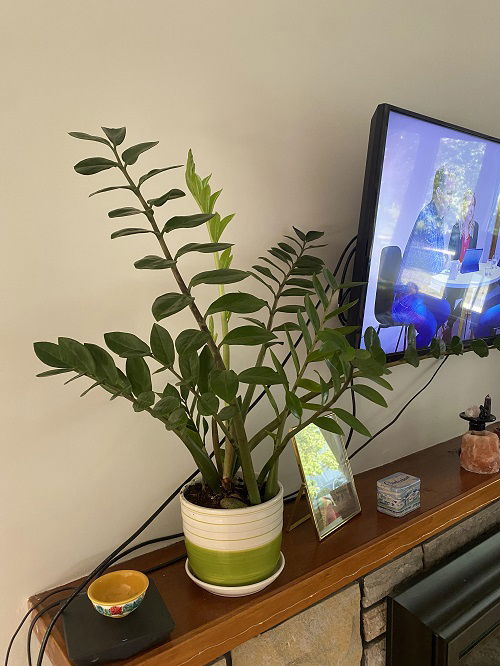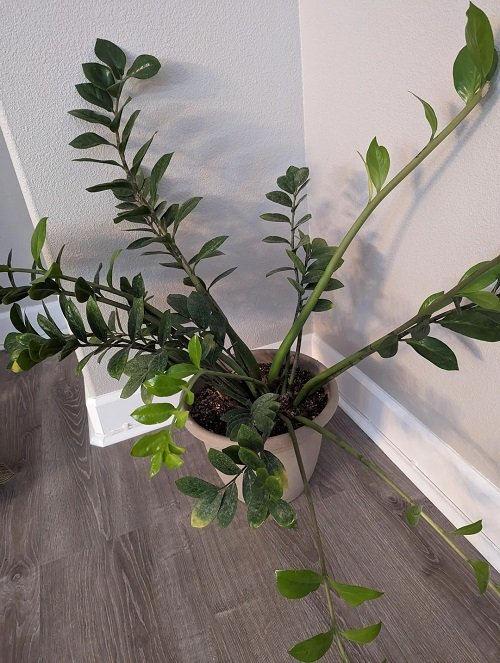What should you do when your plant growth is unusual and looks weak? Is it a sign of a Leggy ZZ Plant? Find out here!

Legginess in plants can be due to many different reasons. But don’t worry! We’ve covered all the bases for you in our How to Fix a Leggy ZZ Plant guide.
Reasons Behind a Leggy ZZ Plant

Before we move ahead, it is important to understand what exactly the term “leggy plant” is? Well, when the plants start to grow unusually long with thin stems that grow towards the light source, that growth pattern is described as legginess. It is also accompanied with sparse, droopy, or yellowing leaves. In ZZ plants, this might happen due to:
- The biggest reason why ZZ plants become leggy is because of lack of sunlight. These plants do well in dappled light, but sometimes, people keep them in shade for too long, which results in their stems stretching towards the light source.
- Excessively watering the plant will also result in lead to weak, leggy growth.
- If you are not feeding it regularly/properly, the stems will start to become thin and weak.
- If the plant is in excessively small pot, then the limited space can can stress it, causing leggy growth, as the roots will struggle to absorb nutrients.
- Lastly, if you have an old ZZ plant, it will become leggy due to the fact that it will naturally shed its lower foliage to grow taller.
How to Fix Leggy ZZ Plant?

Now that you have understood the reasons above, let’s find a solution to them all, one by one!
- Start with pruning! Take away all the weak stems and leaves from the plant, along with yellowing and damaged parts of the foliage. It will make it look neat, and will also create space for proper air and sunlight penetration. It will also save the plant from wasting its resources to maintain leggy parts, helping it focus on new growth.
- Now, you have to ensure the plant gets indirect and bright light all day long. The best bet? Keep it at an east facing location, where it will get the direct, mild morning sunlight for a 3-4 hours. It would be a good idea to rotate the plant once a week to ensure all its sides get proper light exposure.
- As overwatering is a big no, do ensure that you moisten the growing medium only when the topsoil goes a little dry to the touch, about half an inch deep. Also, make sure the container has drainage hole at the bottom.
- Feeding the plant is important! Use a balanced liquid feed—dilute it to 1/2 of its strength, and fertilize the plant once in 8-10 weeks in spring and summer. Avoid feeding during fall and winter, as it won’t grow actively this time.
- Do not keep the plant in the same pot for years. Depending on the growth and spread, keep on re-potting it into 1-2 sizes bigger container than the old one, every 2-3 years, or when you spot visible roots on the topsoil.


